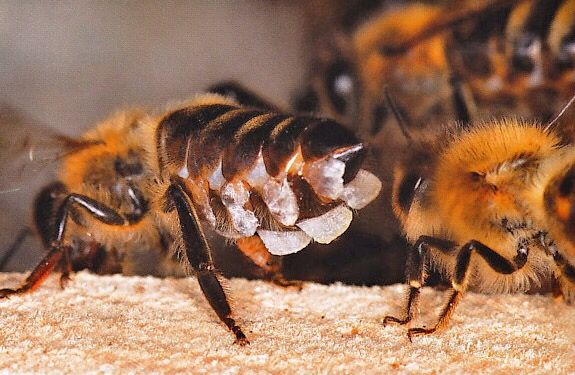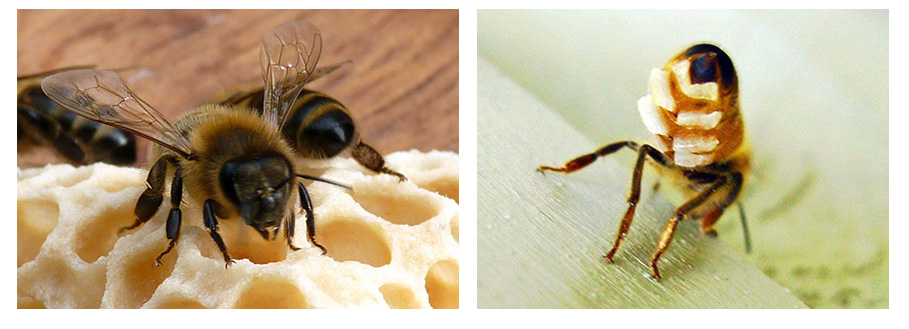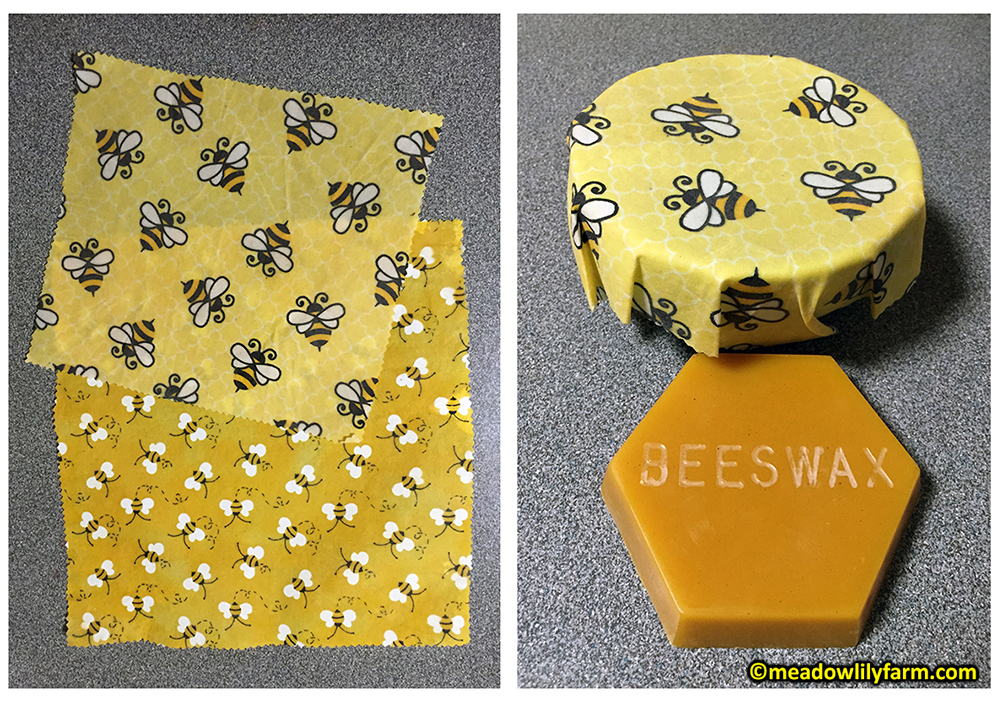
 By Meadowlily Farm
By Meadowlily Farm- 9,233
Young worker honey bees are charged with the task of making beeswax for the colony. Soon after a new worker bee emerges, it begins producing wax. Honey bee worker bees have four pairs of special wax-secreting glands on the undersides of their abdomen.
From these glands, they secrete liquefied wax, which hardens into thin scales when exposed to the air. As the worker bee ages, these glands atrophy and the task of making wax is left to younger bees.
After the soft wax hardens, the worker bee uses stiff hairs on her hind legs to scrape the wax from her abdomen. She passes the wax forward to her middle legs, and then to her mandibles. The bee chews the wax until it is pliable, and carefully shapes it into the hexagonal cells that make up the colony’s honeycomb. Worker bees use their mouths to measure the thickness of the honeycomb as they build it, so they know whether more or less wax is needed.
During its peak wax production phase, a healthy worker bee can produce about eight scales of wax in a 12 hour period. The bee colony requires about 1,000 wax scales to make a single gram of beeswax for their comb. The geometry of the honeycomb allows the bee colony to maximize their storage space while minimizing the quantity of wax needed to build the structure.
Bees Rock!









